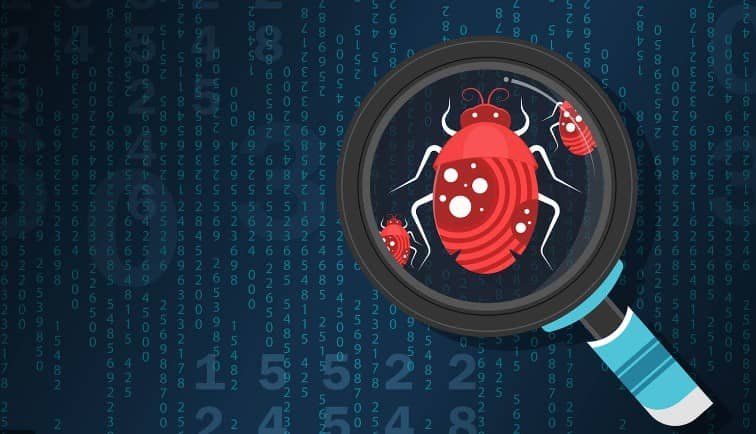Sandbox – a dedicated environment for the secure execution of programs

This is a secure testing environment. The solution isolates untested code changes and experiments from the production environment and repository in the context of software development. Including web development and version control.
The sandbox detects threats in files transmitted over the network (mail messages, file downloads from the Internet, etc.) using advanced behavioral analysis technologies. The system helps detect and prevent APT threats before they penetrate a specific host. Next, we will analyze how the system works, how to run sandboxie, what the sandbox allows you to do, and which solution to choose.
Sandboxes for business
Sandboxes are used to run suspicious code from unknown attachments and URLs and further observe their behavior. Such an environment allows experts to safely “blast” the code to determine how it works and whether it is malicious. Control signs include:
- does the code replicate itself,
- is trying to contact the command and control server,
- whether downloading additional software,
- whether it encrypts sensitive data, etc.
In addition to security testing, sandboxes are used to run code before mass deployment. In a typical production business environment, sandboxes are critical to several development, cybersecurity, and research scenarios. An isolated and secure environment is essential in cybersecurity research, as malware actively scans corporate networks for discovered vulnerabilities.
The sandbox will protect:
- against the loss of all company data due to infection with a ransomware or other malicious code;
- from loss of control over a specific host and the network as a whole;
- from theft of confidential information, or the withdrawal of funds.
Using a virtual sandbox environment allows organizations to evaluate all aspects of data collection and verify that the data flow in both directions is working as it should. The very functioning of Sandbox depends on what is being tested. For example, a sandbox environment used for malware testing is set up and functions differently from code testing and application updates. And a sandbox for researching potential malware requires isolation from production software.
In a sandbox environment, companies will be able to:
- Run code and evaluate it based on activity, not attributes.
- Launch executable files and other hidden malware.
- Allow and monitor network traffic.
- It is safe to execute malicious code or disk operations.
- It is safe to change registries / system / configuration, etc.
Related content : How does malware evade the sandbox?
API sandbox
Having an API sandbox will strengthen the security of any applications that use the API. The software architecture relies on APIs as the core of the application. Application testers should test how the application responds to various API responses. But if those APIs are still in development or being developed by a third party, how can you fully test them? This is where the sandbox API comes in.
An API sandbox is a framework that testers can use to simulate the characteristics of a production environment and create simulated responses from all the APIs an application relies on. The solution will reduce the cost and risks associated with calling third-party APIs during testing.
The sandbox API will allow:
- reduce the cost and risks associated with calling third-party APIs during testing;
- conduct parallel testing and development to speed up application development cycles and reduce time to market;
- simulate error scenarios with your API (API response time delay, error conditions, or complete simulation of a non-responsive API).
HOW DOES A SANDBOX WORK?
Emulation of a real device
The sandbox mimics the physical hardware, providing a deep understanding of the program’s behavior and impact. The test application has access to the same resources as the code being analyzed, including CPU, memory, and storage.
Operating system emulation
Simulates the operating system (OS) of the end user, but not the machine’s hardware. In the case of a virtual machine, the sandbox is isolated from the underlying physical hardware, but has access to the installed OS.
Virtualization environment
Using a virtual machine-based sandbox to store and scan suspicious programs. Has no access to physical resources, but can access virtualized hardware.
BENEFITS OF SANDBOXING SECURITY
Sandboxes are like a testing environment for development. They are used to securely run any application before deploying it to production so that it does not have access to production resources. “Sandboxie” allows you to run malware without stopping and damaging business-critical resources.
The sandbox is also used as a quarantine for unknown email messages and attachments. The administrator needs a safe place to view suspicious files and detect false positives. Malicious documents may contain macros that exploit flaws in popular applications. Using the sandbox, the specialist will open the attachment, review the macro, and make sure it is safe.
The sandbox will allow any employee to run unknown code without exposing their systems to new threats.
BEST SANDBOX SOLUTIONS
When you rely on integration to power your core business processes, it’s critical to have an impact-free testing environment to eliminate the risk of failure. Feel free to use the Sandbox environment to test, customize, and improve integration. Cloud Networks will select the right solution for you and integrate it into your infrastructure. Read more about products from our partners below.
Kaspersky Sandbox : Automated protection against advanced threats. The solution includes dynamic discovery, easy manageability, and scalability. It is also possible to integrate with other Kaspersky Security solutions.
Kaspersky Anti Targeted Attack : XDR-class solution with reliable protection against complex cyber attacks. Automatic response to complex threats, data collection and storage, comprehensive analysis and timely detection. Advanced protection against the most complex threats.
Positive Technologies Sandbox : The first sandbox that protects exactly your infrastructure. Flexible configuration of virtual environments. Retrospective analysis. Supports flexible, convenient customization of virtual environments for analysis and detects threats not only in files, but also in traffic.
Dr.Web vxCube : Dr.Web vxCube scans files in an isolated virtual environment. It allows you to identify signs of infection of computer systems and timely stop attempts of attacks, including targeted ones (APT). The solution is available in the “cloud” version and “On-premise”.
Check Point Sandbox : Check Point SandBlast Zero-Day Protection technology to prevent previously unknown and targeted attacks. SandBlast Threat Emulation is a component that is a new kind of sandbox organization from Check Point (Check Point Sandbox).
Cisco DevNet Sandbox : DevNet Sandbox makes free distribution of Cisco technology available to developers and engineers. VPN connection required. There is no way to save the environment.
Forcepoint Advanced Malware Detection : Detects advanced threats by analyzing file behavior in a restricted operating system environment. There are two types of sandbox servers available for forcepoint malware detection: cloud and local.
Fortinet Sandbox : Highly praised advanced threat detection technology. Intelligent automation, extensive integration options. Flexible deployment and expandable open system.
McAfee Advanced Threat Defense : The combination of deep static code analysis, dynamic malware analysis (sandboxing) and machine learning provides higher accuracy in detecting zero-day threats and malware.



